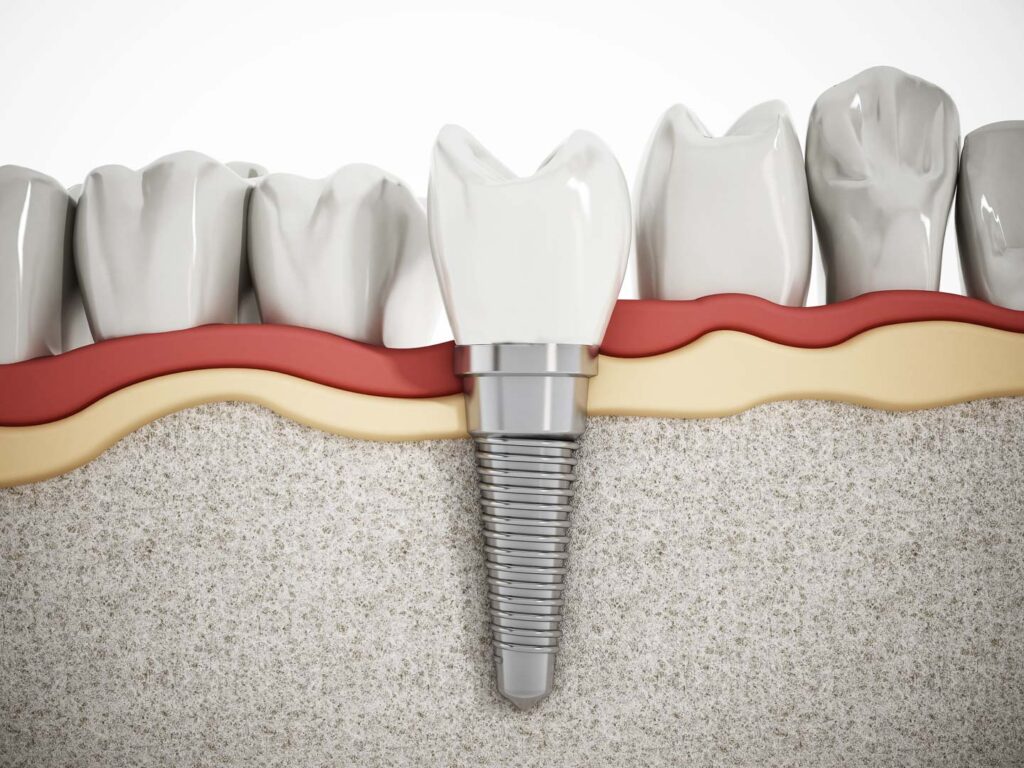Get in touch with us by calling or filling out the form below

Dental Services in Whittier, CA
Saman Edalat D.D.S. of Whittier, CA uses state-of-the-art, advanced technologies to ensure you receive precise, quality care at every visit.
We offer the following comprehensive dental services:
- Teeth Whitening
- Root Canal Treatments
- Dental Implants
- Tooth Extractions
- Invisalign
- Emergency Dentistry
- Gum Disease Treatment
- Veneers
- Crowns

Teeth Whitening
If your teeth are discolored, yellow, or stained, whitening treatments can brighten your smile and restore your teeth to their pearly white color.
Over time, tooth enamel can chip, crack, and erode, revealing the yellowish lower layer of your teeth called the dentin.
Other common causes of discolored teeth:
- Drinking dark-colored beverages like coffee, red wine, and tea
- Poor oral hygiene habits
- Smoking
- Eating highly pigmented foods like blueberries and tomato sauce
- Taking certain prescription medications like antihistamines, beta-blockers, and ACE inhibitors
Same-Day Office Whitening
We offer fast whitening treatments in our comfortable Whittier, CA office. During your visit, a rubber dam will cover your gums and tongue. Next, your physician will carefully apply a bleaching solution to the surface of your teeth. After about 15 to 20 minutes, your dentist will then direct a special light at your teeth to trigger a chemical whitening reaction. The process will be repeated until your teeth are several shades lighter.
Take-Home Whitening Trays
You can also whiten your teeth at home using whitening trays. Each night, you’ll wear the trays for three to four hours until you achieve the desired results. At-home treatments do not produce the same results as in-office whitening, but they can dramatically improve the color of your smile.

Root Canal Treatments
A root canal is an outpatient oral surgery that helps prevent a tooth extraction.
Common reasons for root canals:
- Extensive tooth decay
- History of repeated dental procedures on a tooth
- Chipped or cracked tooth
- Injury to the tooth due to force or impact
The procedure begins with your dentist creating a hole in the top of your damaged tooth to remove the infected pulp. After rinsing your tooth with antiseptic, your dentist will refill your tooth with a rubbery material called gutta-percha. Next, your dentist will take impressions of your tooth and send them off to a dental lab that will fabricate a permanent crown. The last step is to seal the hole in your tooth to prevent reinfection.
After your root canal, you’ll take an oral antibiotic to prevent infection. If you experience any pain or swelling, you can take an over-the-counter pain reliever. You’ll also need to avoid smoking until your tooth heals. The procedure only requires a local anesthetic, and most people fully recover in about a week.
When your crown arrives, you’ll return to the office to have it fitted.

Dental Implants
Dental implants are made from biocompatible materials like ceramic and titanium and are used to replace missing teeth. Unlike traditional dentures, dental implants look, feel, and function like natural teeth.
One major benefit of dental implants is that they stimulate bone tissue in your jaw. Bone tissue needs stimulation to retain strength and prevent deterioration of your jawbone to maintain the natural shape of your face.
To be a candidate for dental implants, you first need to have healthy gums. If you have gum disease, you’ll need to have that treated before getting dental implants. You’ll also need to have sufficient amounts of bone tissue in your jawbone.
After your dentist secures your implant and the root fuses to your jawbone, your dentist will install a restoration, like a crown, bridge, or dentures.

Tooth Extractions
Tooth extractions are outpatient procedures that involve removing one or more teeth. Impacted wisdom teeth are the most common type of tooth extraction.
Common reasons for tooth extractions:
- Extensive tooth decay
- Overcrowded teeth
- Tooth injury
- Preparation for braces
- Infections
- Impacted teeth
If a toothache doesn’t respond to over-the-counter pain medication, you’ll need to have it evaluated by a dentist. Most extractions are minimally invasive procedures, but surgery is often required for impacted teeth.
Most people only experience mild discomfort after a tooth extraction, but if you are prone to anxiety or have a low sensitivity to pain, you may require sedation to stay comfortable throughout the procedure.

Invisalign
If you have crooked or misaligned teeth, Invisalign may be a viable option instead of traditional braces. The treatment involves a series of aligners made from thin, flexible BPA-free plastic that gently push your teeth into proper alignment over time.
Because the aligners are transparent, they are far less noticeable than braces, and you can remove them easily during meals, when brushing and flossing, or for important events or meetings. Invisalign is also less invasive and painful than braces. Most people achieve results in 6 to 18 months.
Common reasons to consider Invisalign treatment:
- Crooked teeth
- Crowded teeth
- Widely spaced teeth
- Overbite
- Underbite
- Crossbite
- Open bite
Schedule an evaluation to see if Invisalign would be an option for you.

Emergency Dentistry
Saman Edalat D.D.S. offers fast, effective emergency dental care in our Whittier, CA office. However, dental emergencies usually happen unexpectedly, which is why it’s essential to have an established, trusted relationship with a dentist who is familiar with your medical history.
Common types of dental emergencies:
- Sports injuries
- Knocked out tooth
- Dislodged filling, crown, or bridge
- Cracked, chipped, or fractured tooth
- Severe toothaches
- Replaced fillings
- Abscess
- Cut or tear on your oral tissues, like lips, cheeks, gums, or tongue
Do not delay treatment. Treating injuries as quickly as possible can alleviate pain and potentially save your teeth.
If you lose a tooth, be sure to bring it with you to your appointment. Do not touch the roots directly, or you may damage them. To prevent the roots from drying out, keep your tooth in your mouth or a glass of milk until you arrive at the office.

Gum Disease Treatment
Gum disease is the leading cause of tooth loss, and it occurs when plaque builds up on the surfaces of your teeth. Over time, acids and bacteria in the plaque can irritate your gums and cause an infection, slowly eroding your gum tissue. If left untreated, gum disease can lead to more serious systemic infections throughout your body.
Gum disease often develops silently, so it’s important to recognize early warning signs.
Signs of gum disease:
- Gum swelling or tenderness
- Red or inflamed gums
- Loose teeth
- Bleeding during brushing or flossing
- Receding gums
The two most common gum diseases are gingivitis and periodontitis.
Gingivitis
Gingivitis is the early stage of gum disease. During this stage, your gums may become red, tender, or swollen. You may also experience bleeding during brushing and flossing. Treatment is critical to avoid the progression to periodontitis.
Periodontitis
Periodontal disease is a more advanced stage of gum disease. At this stage, your gums begin pulling away from your teeth, creating pockets between your teeth and gums. These pockets can fill in with more plaque, food, and debris. As the cycle continues, the infection worsens and eventually leads to tooth loss.
Treatments for gum disease:
- Professional dental cleaning
- Scaling or root planing
- Laser therapy
- Pocket reduction treatment
- Gum lifts
If you have signs of gum disease, call our Whittier, CA office today to schedule an appointment as soon as possible.

Veneers
Veneers are an affordable, non-invasive dental restoration that can restore the size, shape, color, or alignment of your teeth. A veneer is a custom-made covering made of various compounds (resins) that bond to the outside of your natural teeth. Unlike a crown that covers your entire tooth above the gumline, veneers only cover the front portion of your tooth. Veneers are typically used for cosmetic purposes.
Types of veneers:
- Porcelain: A type of ceramic that is strong, stain-resistant, durable, and long-lasting
- Lumineers®: A bonding agent that is fast, convenient, and less invasive
- eMax® Veneers: Similar to porcelain veneers, but applied in layers with a brush and then cured
- Porcelain Jackets: Similar to crowns, but no metal is involved
Reasons to consider a veneer treatment:
- Crooked teeth
- Cracked teeth
- Chipped teeth
- Gaps between teeth
- Damaged teeth
- Smaller-than-average teeth
- Discolored teeth
- Pointy or crooked teeth

Crowns
Crowns cover your entire tooth above the gum line, and they are for both cosmetic and restorative purposes. Crowns are commonly made from porcelain, Zirconia, gold, and eMax®.
Reasons to consider a crown treatment:
- Protect weak teeth from further damage
- Hold a cracked tooth together
- Correct a misshaped tooth
- Replace a large filling
- Attach a dental implant
- Restore an excessively worn tooth
To install a crown, your dentist will carefully remove a thin layer of enamel from your tooth. Next, they will take an impression of your smile and send it to a dental lab, where a technician will fabricate a custom-made crown. This may take a couple of weeks.
While you wait for your permanent crown to arrive, your dentist can add a temporary veneer that you will wear until it’s time to fit your crown.
Regular dental care is critical to your overall health, and our expert team is ready to help you regain your beautiful smile.
Schedule an appointment today by calling Saman Edalat D.D.S. of Whittier, CA or booking online.
